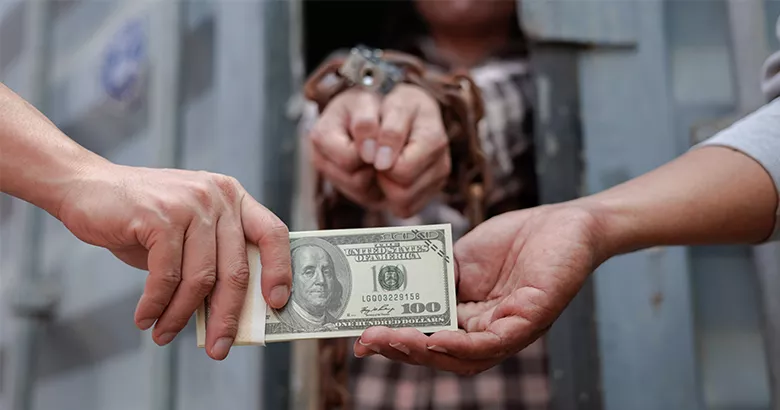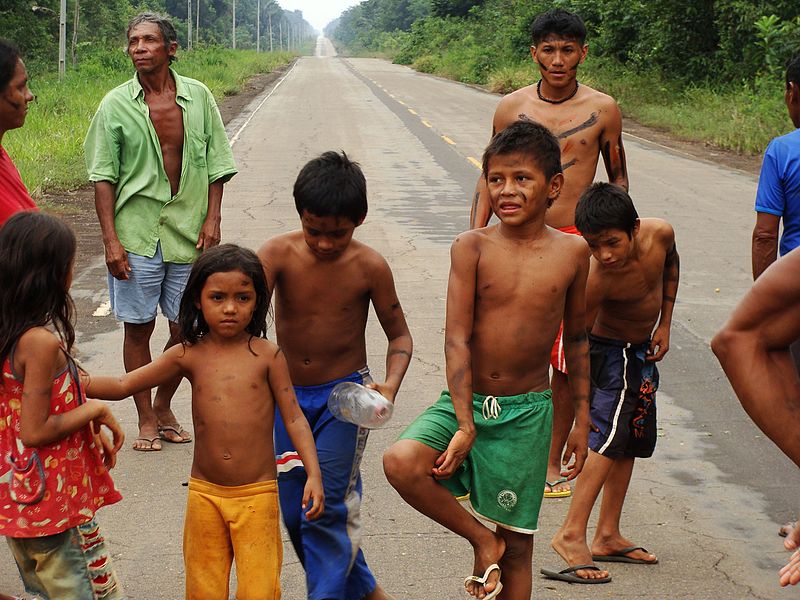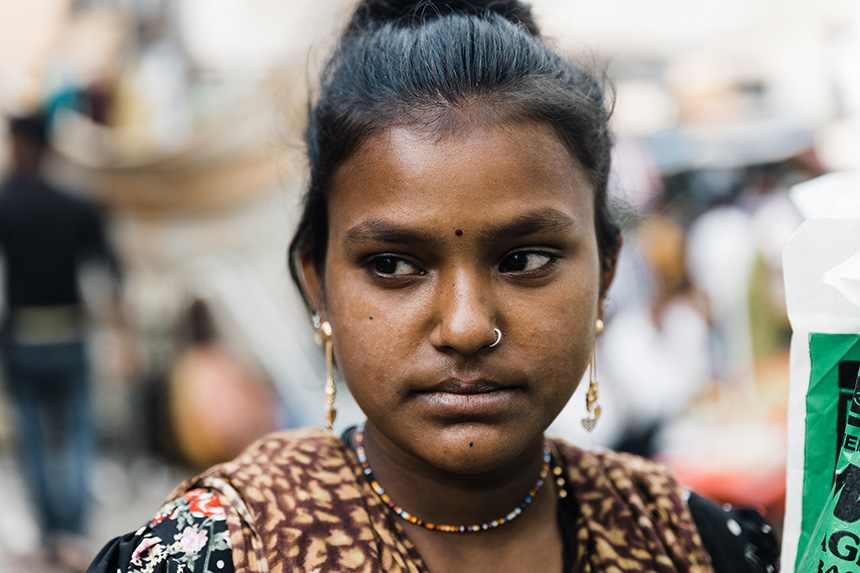Trends
Human Trafficking: From Brazilian Borders To Canadian Colleges, Capitalizing On Emotions And The Carrot Of A “Better Life”; How Millions Of People Are Exploited Every Year
Published
10 months agoon

Human trafficking and migrant smuggling are two sides of the same grim coin, feeding off human vulnerability and exploiting dreams of a better future. While they differ in their technical definitions, their intersection creates a cycle of suffering, where desperate individuals are trapped between hope and horror.
Human Trafficking vs. Migrant Smuggling
Human trafficking involves coercion, deception, or exploitation for purposes such as sexual exploitation, forced labor, organ harvesting, and other abuses.
Migrant smuggling, on the other hand, is a transactional arrangement where individuals pay smugglers to cross borders illegally. Yet, even in the latter, the journey often spirals into exploitation, as smugglers abandon, extort, or sell migrants into trafficking networks.
For many, the lure of a better life—escaping poverty, war, or systemic inequalities—is a carrot dangled by traffickers and smugglers alike. Tragically, the pursuit of this dream often ends in abuse, captivity, or even death.
Brazil BYD Case
The recent case involving Chinese workers at a BYD construction site in Bahia, Brazil, shines a harsh spotlight on the darker side of global supply chains.
Brazilian labor authorities have identified the conditions these workers faced as akin to slavery, sparking international outrage and complicating BYD’s ambitious plans in its largest overseas market.
BYD, a Chinese electric vehicle (EV) giant, had hired Jinjiang Group to construct its factory in Bahia. Reports revealed that 163 workers were housed in deplorable conditions, leading to allegations of human trafficking. While Jinjiang refuted these claims as “translation misunderstandings,” the reality speaks volumes, the workers endured severe exploitation.
The controversy threatens to derail BYD’s expansion plans in Brazil, where it has invested $620 million to establish a factory aimed at producing 150,000 vehicles annually. Brazil, eager for Chinese investment, faces a dilemma – balancing economic ties with China against its commitment to labor rights and job creation for locals.
Global Implications of BYD’s Scandal
This incident is more than just a blemish on BYD’s reputation; it is indicative of a broader issue of exploitation in international business operations. BYD’s model of importing Chinese workers for overseas projects, while economically efficient, also hits at local job creation—a priority for Brazilian President Luiz Inácio Lula da Silva.
Furthermore, the allegations of human trafficking bring unwelcome scrutiny at a time when BYD is aggressively expanding its global footprint. The company, which now dominates China’s EV market and is poised to outsell Ford and Honda globally, has built factories in Hungary, Mexico, Thailand, and Uzbekistan. Yet, this controversy could cast a long shadow over its international ambitions.

Human Trafficking Is A Global Phenomenon
The BYD case is a microcosm of a larger, global issue. From the perilous Mediterranean crossings to the harrowing journeys through Latin America to reach the U.S. border, millions of people are exploited every year.
At its core, human trafficking and migrant smuggling thrive on emotional vulnerability. Traffickers promise escape from poverty, conflict, or discrimination, exploiting the hopes of those desperate for change. Governments, too, bear responsibility for creating conditions that push people into the hands of traffickers—whether through inadequate protections, restrictive migration policies, or economic disparities.
Human trafficking remains one of the darkest stains on humanity, evolving in its methods and scope as it adapts to modern technology and globalization.
In 2022, the crime spanned at least 162 nationalities trafficked to 128 countries, with the majority of victims (58%) exploited within their national borders. Yet, the rise of cross-border trafficking reveals alarming trends, especially in regions like the Middle East and Western and Southern Europe.
The European Surge
Western and Southern Europe witnessed a 45% increase in trafficking detections compared to 2019, with victims coming from diverse regions, including South-Eastern Europe, Sub-Saharan Africa, North Africa, South Asia, and East Asia.
Forced labor dominated the exploitation spectrum, infiltrating sectors like agriculture, restaurants, and domestic work. The demographic breakdown showed an unsettling pattern: men (39%) formed a higher percentage of victims than women (28%). This shift challenges the stereotypical image of trafficking victims and underscores the pervasive reach of forced labor networks.

Brazil’s Own Troubling Reality
Brazil faces its own endemic trafficking crisis, with forced labor being the most prevalent form of exploitation. The primary victims are young men aged 18 to 29, often coerced into inhumane working conditions. Following closely is sexual exploitation, a persistent and heinous crime targeting vulnerable populations. Alarmingly, new forms of exploitation are emerging, such as children trafficked for illegal adoption—a practice increasingly facilitated by advanced digital technologies.
These insights come from the United Nations Office on Drugs and Crime’s (UNODC) National Report on Trafficking in Persons, which highlights the grim dynamics of this crime across Brazil. Despite significant efforts, the nation’s vast geography and socio-economic disparities create fertile ground for traffickers to operate.
India’s Allegations Against Canadian Colleges
Adding a global dimension to this crisis, recent allegations from India shed light on a new and insidious form of trafficking involving educational institutions. Indian law enforcement agencies are investigating alleged links between dozens of Canadian colleges and two entities in Mumbai accused of orchestrating human trafficking networks.
According to India’s Enforcement Directorate (ED), a multi-city investigation unearthed incriminating evidence of a large-scale operation.
Shockingly, 262 Canadian colleges reportedly entered into agreements with these entities, enabling the trafficking of students across the Canada-U.S. border. The scale of the operation is staggering, with over 5,000 agents and partners linked to the entities across India, of which 800 remain active.
This investigation was prompted by the tragic death of a four-member Indian family from Gujarat’s Dingucha village in 2022. The family succumbed to extreme cold while attempting to cross the Canada-U.S. border illegally, highlighting the perilous journeys victims are forced to undertake.
The Dingucha Case. India’s Allegations Against Canadian Colleges
The Directorate of Enforcement (ED), Ahmedabad Zonal Office, conducted searches across Mumbai, Nagpur, Gandhinagar, and Vadodara under the Prevention of Money Laundering Act (PMLA), 2002. The investigation centers around Bhavesh Ashokbhai Patel and others, accused of orchestrating a conspiracy to traffic individuals to the United States via Canada under the guise of student admissions.
The ED uncovered that Indian nationals were lured into the racket and charged exorbitant fees ranging from ₹55 to ₹60 lakh per person. These individuals were granted Canadian student visas but were subsequently trafficked across the Canada-U.S. border instead of attending colleges. Disturbingly, fees received by Canadian colleges were allegedly funneled back to the traffickers’ accounts.
The scale of the operation is staggering. About 25,000 students were referred annually by one entity, and over 10,000 by another, to colleges outside India. Investigations revealed agreements between these entities and 262 Canadian colleges, highlighting a systemic abuse of educational channels.
This probe was triggered by the tragic death of a four-member Indian family from Gujarat’s Dingucha village in January 2022. The family succumbed to extreme cold while attempting to cross the Canada-U.S. border illegally, shedding light on the dangerous paths traffickers force victims to undertake.

Who is Most Vulnerable?
While trafficking can impact anyone, certain groups face disproportionate risks. Evidence suggests that people of color and LGBTQ+ individuals are more likely to be trafficked due to systemic inequities such as generational trauma, historic oppression, and discrimination. These societal factors create vulnerabilities that traffickers exploit with ruthless precision.
The Recruitment and Grooming Tactics
Traffickers wield stories as weapons—fantastical promises of romantic love or lucrative jobs. These tales often serve as red flags for potential trafficking. For instance, from January 2020 through August 2022, 44% of sex trafficking victims were trafficked by family members, and 39% by intimate partners. Such recruitment tactics show the deeply personal and manipulative nature of this crime.
The Global Challenge
Human trafficking is no longer confined to traditional methods or limited to underdeveloped regions. It has become a sophisticated global enterprise, leveraging digital tools and exploiting systemic loopholes.
From Brazil’s forced labor camps to Europe’s booming cross-border trade, and now the disturbing revelations of Canadian colleges allegedly complicit in trafficking, the issue demands urgent and coordinated international action.
Governments must enhance surveillance, improve victim identification, and prosecute perpetrators with the full force of the law. Equally important is addressing the root causes of trafficking—poverty, inequality, and lack of opportunity—to dismantle the systems enabling this exploitation.
The growing numbers of human trafficking reveals the fact that no nation is immune. It is a crime that transcends borders, exploiting the vulnerable and eroding the fabric of society.
